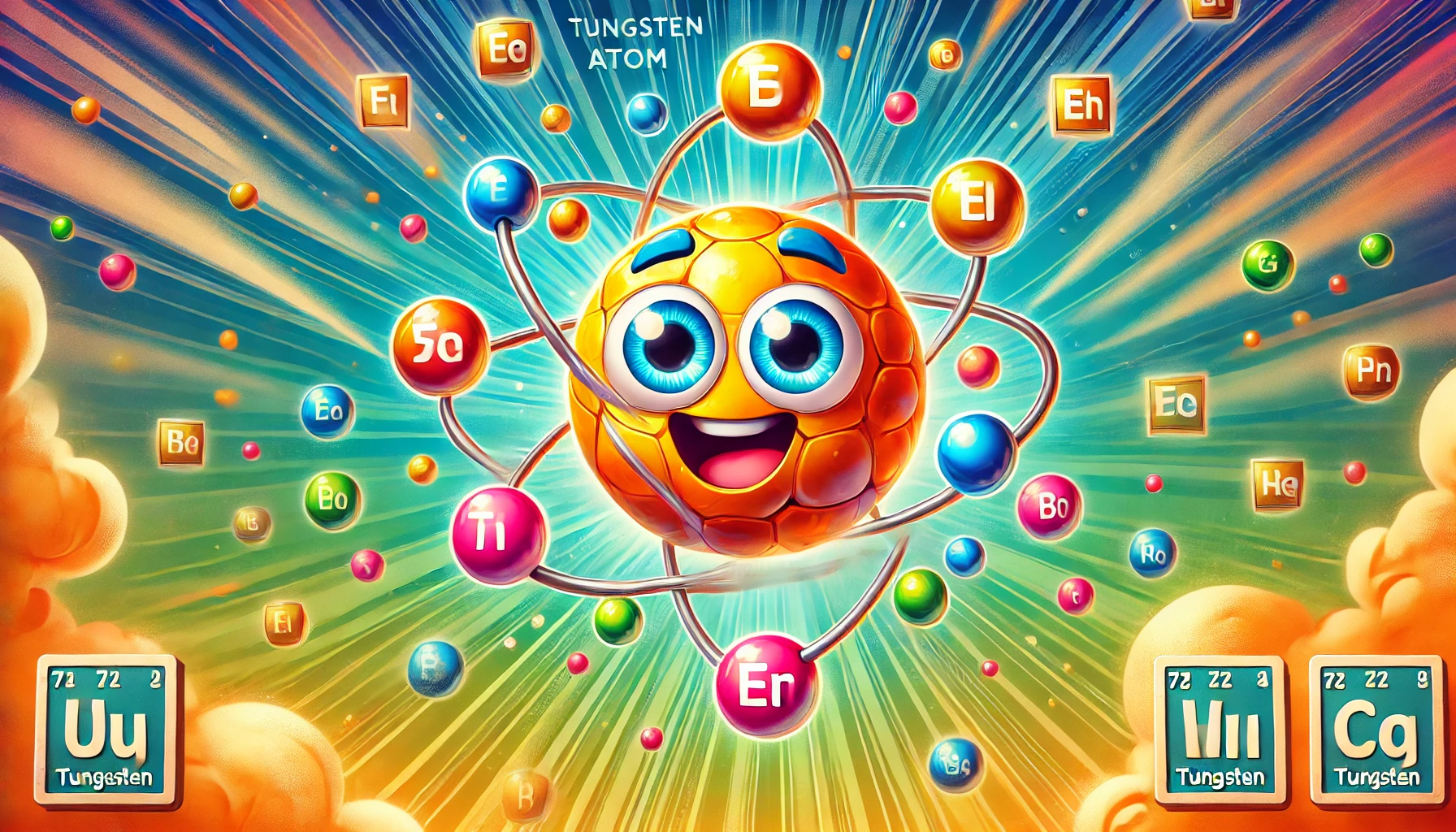Understanding Tungsten: Properties, Uses, Health Risks, and Fascinating Facts
Understanding Tungsten: Properties, Uses, Health Risks, and Fascinating Facts
Table of Contents
- Introduction to Tungsten
- Properties of Tungsten
- Uses of Tungsten
- Health Risks of Tungsten Exposure
- Interesting Facts about Tungsten
- Environmental Impact of Tungsten
- Conclusion
- References
Understanding Tungsten: Properties, Uses, Health Risks, and Fascinating Facts
Introduction to Tungsten Tungsten is a chemical element with the symbol W and atomic number 74. Known for its remarkable hardness and high melting point, tungsten is an essential material in many high-temperature and high-stress applications. This article explores the properties, uses, health risks, and interesting facts associated with tungsten, providing a comprehensive understanding of this durable metal.
Properties of Tungsten Tungsten is characterized by several distinct physical and chemical properties.
Physical Properties
- Appearance: Tungsten is a lustrous, grayish-white metal.
- Density: The density of tungsten is 19.3 g/cm³, making it one of the heaviest metals.
- Melting Point: Tungsten has the highest melting point of all metals at 3,422°C (6,192°F).
- Boiling Point: The boiling point of tungsten is 5,555°C (10,031°F).
Chemical Properties
- Reactivity: Tungsten is relatively inert and does not react easily with most chemicals. It is resistant to oxidation and corrosion.
- Compounds: Tungsten forms various compounds, such as tungsten carbide (WC), tungsten trioxide (WO₃), and ammonium paratungstate ((NH₄)₁₀[H₂W₁₂O₄₂]).
Uses of Tungsten Tungsten has numerous applications across different industries due to its unique properties.
Industrial Applications
- Tungsten Carbide: Tungsten carbide is an extremely hard material used in cutting tools, abrasives, and armor-piercing ammunition. It is essential for machining and drilling in the manufacturing industry.
- High-Temperature Applications: Tungsten is used in applications that require high-temperature stability, such as filaments in incandescent light bulbs, heating elements in furnaces, and components in rocket engines.
Electronics
- Semiconductors: Tungsten is used in the electronics industry for its excellent conductivity and high melting point. It is used in the production of semiconductors and integrated circuits.
- X-Ray Tubes: Tungsten targets are used in X-ray tubes because of their ability to produce high-intensity X-rays.
Jewelry
- Tungsten Rings: Tungsten is used to make jewelry, particularly rings, due to its hardness and scratch resistance. Tungsten rings are known for their durability and distinctive luster.
Medical Applications
- Radiation Shielding: Tungsten is used in medical applications for radiation shielding due to its high density and ability to attenuate X-rays and gamma rays.
- Medical Devices: Tungsten is used in various medical devices, including surgical instruments and dental tools.
Health Risks of Tungsten Exposure While tungsten is generally considered to be of low toxicity, exposure to tungsten compounds and dust can pose health risks.
Inhalation and Ingestion
- Respiratory Issues: Inhalation of tungsten dust or fumes can cause respiratory irritation, coughing, and shortness of breath.
- Gastrointestinal Issues: Ingestion of tungsten compounds can cause gastrointestinal distress, including nausea, vomiting, and abdominal pain.
Skin and Eye Contact
- Skin Irritation: Direct contact with tungsten compounds can cause skin irritation and dermatitis.
- Eye Irritation: Exposure to tungsten dust or solutions can cause eye irritation and potential damage.
Chronic Exposure
- Organ Effects: Prolonged exposure to high levels of tungsten compounds may affect the liver, kidneys, and other organs.
Interesting Facts about Tungsten Tungsten has several intriguing aspects that make it an interesting element.
Discovery
- Discovered in 1783: Tungsten was discovered by Spanish chemists Juan José and Fausto Elhuyar in 1783. They isolated tungsten from the mineral wolframite, leading to its name “wolfram” in many languages.
Unique Properties
- Hardness: Tungsten is one of the hardest metals, making it invaluable in industrial applications that require wear resistance.
- High Melting Point: Tungsten’s melting point is the highest of all metals, making it ideal for high-temperature applications.
Isotopes
- Stable Isotopes: Tungsten has five naturally occurring stable isotopes, with tungsten-184 being the most abundant.
- Radioactive Isotopes: Several radioactive isotopes of tungsten are known, including tungsten-181, which is used in scientific research.
Environmental Impact of Tungsten Tungsten is not known to have significant environmental impacts, but its extraction and use should still be managed responsibly.
Natural Occurrence
- Abundance: Tungsten is relatively rare in the Earth’s crust and is typically found in minerals such as wolframite and scheelite.
- Mining: Extraction of tungsten must be done carefully to avoid environmental contamination and ensure sustainable practices.
Industrial Waste
- Waste Management: Proper disposal of tungsten-containing industrial waste is crucial to prevent environmental contamination.
Conclusion Understanding tungsten, its properties, uses, health risks, and interesting facts provides valuable insight into this durable metal. While tungsten has several important applications, particularly in high-temperature and high-stress environments, appropriate safety measures should be taken when handling tungsten compounds. Its applications in electronics, industrial manufacturing, and medical technology highlight its importance in modern technology and industry.

<ⓒ WizardMedics (wizardmedics.com)>






